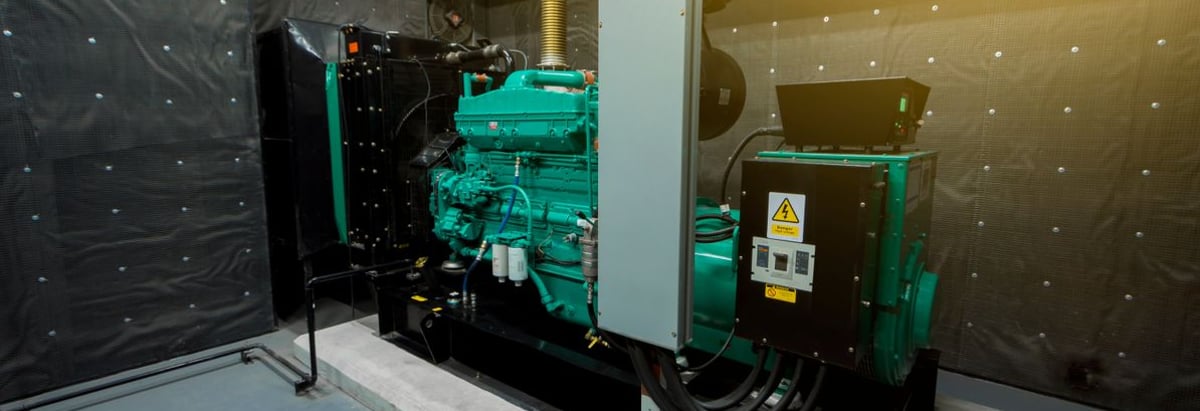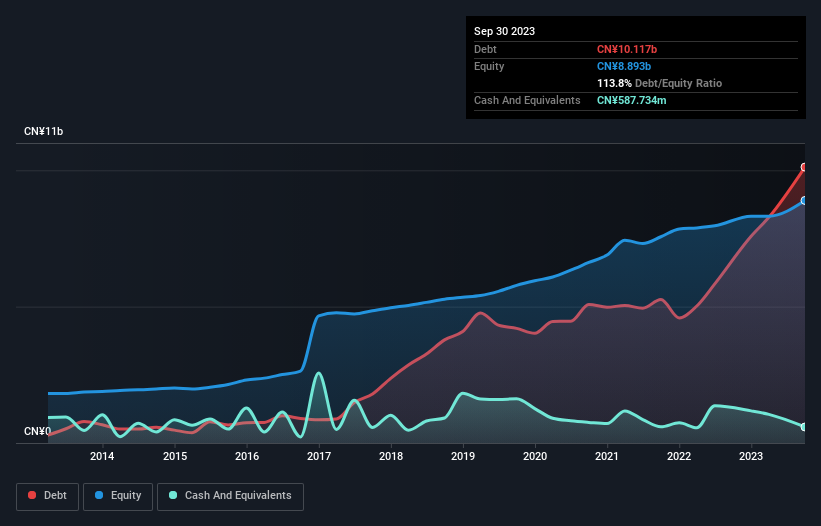- China
- /
- Electrical
- /
- SZSE:002531
Titan Wind Energy (Suzhou)Ltd (SZSE:002531) Has A Somewhat Strained Balance Sheet

The external fund manager backed by Berkshire Hathaway's Charlie Munger, Li Lu, makes no bones about it when he says 'The biggest investment risk is not the volatility of prices, but whether you will suffer a permanent loss of capital.' So it seems the smart money knows that debt - which is usually involved in bankruptcies - is a very important factor, when you assess how risky a company is. Importantly, Titan Wind Energy (Suzhou) Co.,Ltd (SZSE:002531) does carry debt. But the more important question is: how much risk is that debt creating?
What Risk Does Debt Bring?
Generally speaking, debt only becomes a real problem when a company can't easily pay it off, either by raising capital or with its own cash flow. In the worst case scenario, a company can go bankrupt if it cannot pay its creditors. However, a more usual (but still expensive) situation is where a company must dilute shareholders at a cheap share price simply to get debt under control. Having said that, the most common situation is where a company manages its debt reasonably well - and to its own advantage. The first thing to do when considering how much debt a business uses is to look at its cash and debt together.
View our latest analysis for Titan Wind Energy (Suzhou)Ltd
What Is Titan Wind Energy (Suzhou)Ltd's Debt?
As you can see below, at the end of September 2023, Titan Wind Energy (Suzhou)Ltd had CN¥10.1b of debt, up from CN¥7.58b a year ago. Click the image for more detail. However, it does have CN¥587.7m in cash offsetting this, leading to net debt of about CN¥9.53b.

How Strong Is Titan Wind Energy (Suzhou)Ltd's Balance Sheet?
According to the last reported balance sheet, Titan Wind Energy (Suzhou)Ltd had liabilities of CN¥7.99b due within 12 months, and liabilities of CN¥7.31b due beyond 12 months. On the other hand, it had cash of CN¥587.7m and CN¥6.68b worth of receivables due within a year. So it has liabilities totalling CN¥8.03b more than its cash and near-term receivables, combined.
This deficit isn't so bad because Titan Wind Energy (Suzhou)Ltd is worth CN¥18.3b, and thus could probably raise enough capital to shore up its balance sheet, if the need arose. But it's clear that we should definitely closely examine whether it can manage its debt without dilution.
We measure a company's debt load relative to its earnings power by looking at its net debt divided by its earnings before interest, tax, depreciation, and amortization (EBITDA) and by calculating how easily its earnings before interest and tax (EBIT) cover its interest expense (interest cover). Thus we consider debt relative to earnings both with and without depreciation and amortization expenses.
Titan Wind Energy (Suzhou)Ltd has a rather high debt to EBITDA ratio of 5.0 which suggests a meaningful debt load. However, its interest coverage of 4.8 is reasonably strong, which is a good sign. It is well worth noting that Titan Wind Energy (Suzhou)Ltd's EBIT shot up like bamboo after rain, gaining 42% in the last twelve months. That'll make it easier to manage its debt. The balance sheet is clearly the area to focus on when you are analysing debt. But ultimately the future profitability of the business will decide if Titan Wind Energy (Suzhou)Ltd can strengthen its balance sheet over time. So if you're focused on the future you can check out this free report showing analyst profit forecasts.
Finally, a company can only pay off debt with cold hard cash, not accounting profits. So we clearly need to look at whether that EBIT is leading to corresponding free cash flow. Over the last three years, Titan Wind Energy (Suzhou)Ltd recorded negative free cash flow, in total. Debt is usually more expensive, and almost always more risky in the hands of a company with negative free cash flow. Shareholders ought to hope for an improvement.
Our View
Neither Titan Wind Energy (Suzhou)Ltd's ability to convert EBIT to free cash flow nor its net debt to EBITDA gave us confidence in its ability to take on more debt. But its EBIT growth rate tells a very different story, and suggests some resilience. When we consider all the factors discussed, it seems to us that Titan Wind Energy (Suzhou)Ltd is taking some risks with its use of debt. So while that leverage does boost returns on equity, we wouldn't really want to see it increase from here. There's no doubt that we learn most about debt from the balance sheet. But ultimately, every company can contain risks that exist outside of the balance sheet. Case in point: We've spotted 2 warning signs for Titan Wind Energy (Suzhou)Ltd you should be aware of, and 1 of them can't be ignored.
If you're interested in investing in businesses that can grow profits without the burden of debt, then check out this free list of growing businesses that have net cash on the balance sheet.
If you're looking to trade Titan Wind Energy (Suzhou)Ltd, open an account with the lowest-cost platform trusted by professionals, Interactive Brokers.
With clients in over 200 countries and territories, and access to 160 markets, IBKR lets you trade stocks, options, futures, forex, bonds and funds from a single integrated account.
Enjoy no hidden fees, no account minimums, and FX conversion rates as low as 0.03%, far better than what most brokers offer.
Sponsored ContentValuation is complex, but we're here to simplify it.
Discover if Titan Wind Energy (Suzhou)Ltd might be undervalued or overvalued with our detailed analysis, featuring fair value estimates, potential risks, dividends, insider trades, and its financial condition.
Access Free AnalysisHave feedback on this article? Concerned about the content? Get in touch with us directly. Alternatively, email editorial-team (at) simplywallst.com.
This article by Simply Wall St is general in nature. We provide commentary based on historical data and analyst forecasts only using an unbiased methodology and our articles are not intended to be financial advice. It does not constitute a recommendation to buy or sell any stock, and does not take account of your objectives, or your financial situation. We aim to bring you long-term focused analysis driven by fundamental data. Note that our analysis may not factor in the latest price-sensitive company announcements or qualitative material. Simply Wall St has no position in any stocks mentioned.
About SZSE:002531
Titan Wind Energy (Suzhou)Ltd
Produces, develops, and sells wind towers and components in China.
High growth potential low.
Market Insights
Community Narratives



